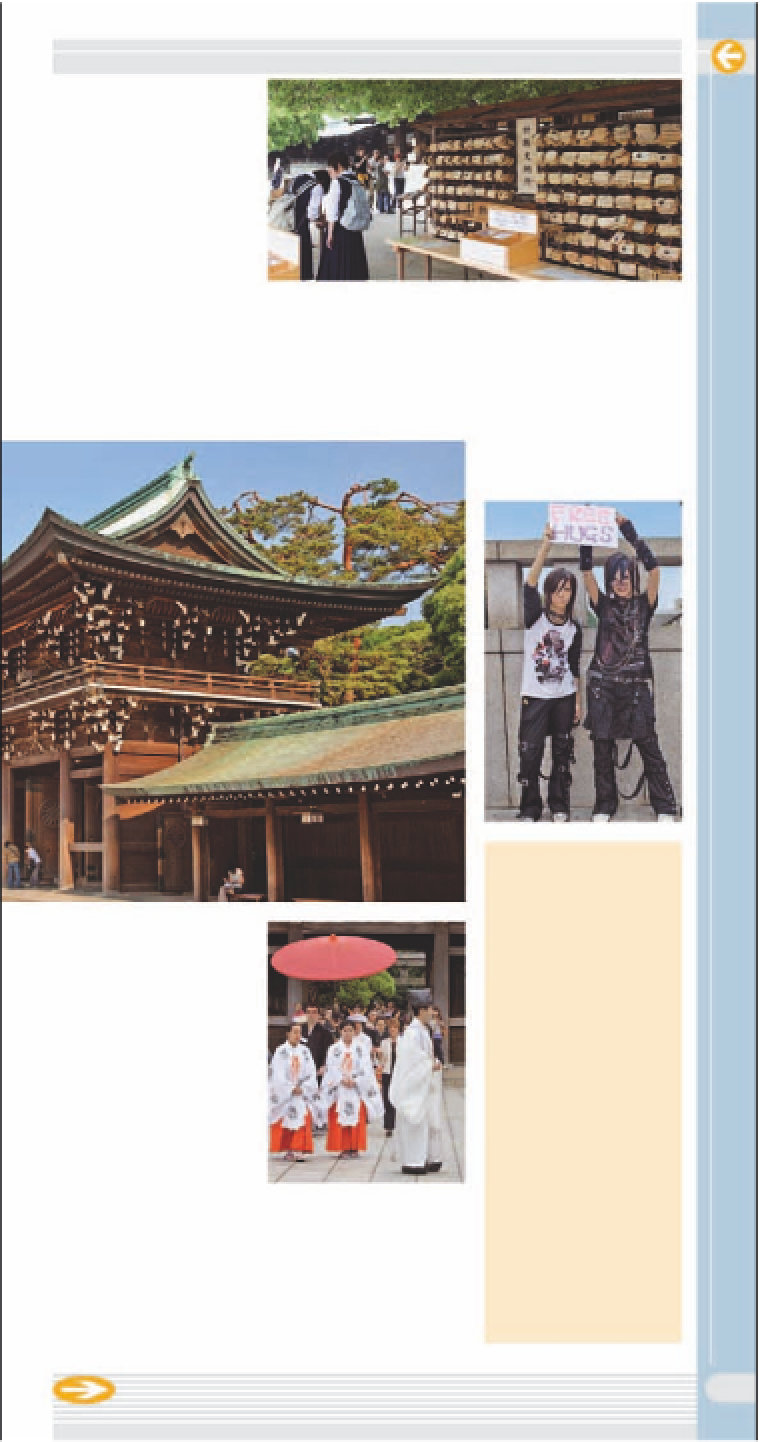Travel Reference
In-Depth Information
Votive Tablets
Ema
(votive tablets)
are still popular today,
especially among stu-
dents petitioning for
divine help in passing
exams. Another
ema
is
usually hung in gratitude,
if a wish is fulfilled
(right)
.
%
^
Imperial Treasure House
&
JR Bridge
This collection of personal artifacts belongs to the
Meiji royalty. A painting by the Italian artist Ugolini
depicts the emperor in European military dress,
with a vase standing on a table at his side. In the
museum, the same vase stands next to the painting.
The bridge leading to
the shrine is a free zone
for performance artists,
some who enjoy dressing
up as their favorite manga
or anime characters, in
Rococo hairstyles and
Gothic makeup
(below)
.
The Meiji Emperor
In 1867, two British
emissaries, Sir Harry
Parkes and Algernon
Mitford, were granted
an audience with the 15-
year-old Emperor in his
palace in Kyoto. What
they found was a vision
of medieval sovereignty:
a boy dressed in white
brocade and vermilion
silk trousers, his teeth
lacquered black, eye-
brows shaved, and
cheeks painted red. Less
than a year later, he
would proclaim the Meiji
era. By the end of his
reign, Japan was an ind-
ustrialized nation, strong
enough to have defeated
Russia in 1904-5.
*
Traditional
Wedding
Processions
Along with the many
rituals and dedicatory
ceremonies held at
the shrine, Shinto-style
weddings
(right)
are
quietly formal in manner
and attire, but visually
dazzling. Most weddings
take place on Saturday
afternoons.
(
Evergreen Forest
)
Souvenir Store
Much of the shrine
grounds are densely
forested. More than
120,000 trees and shrubs
create a garden of
Japanese horticulture.
Amulets, incense,
talismans, lucky arrows,
key rings strung with
a tiny shrine bell, and
models of Tanuki (badger
deity) are sold here.
25


































